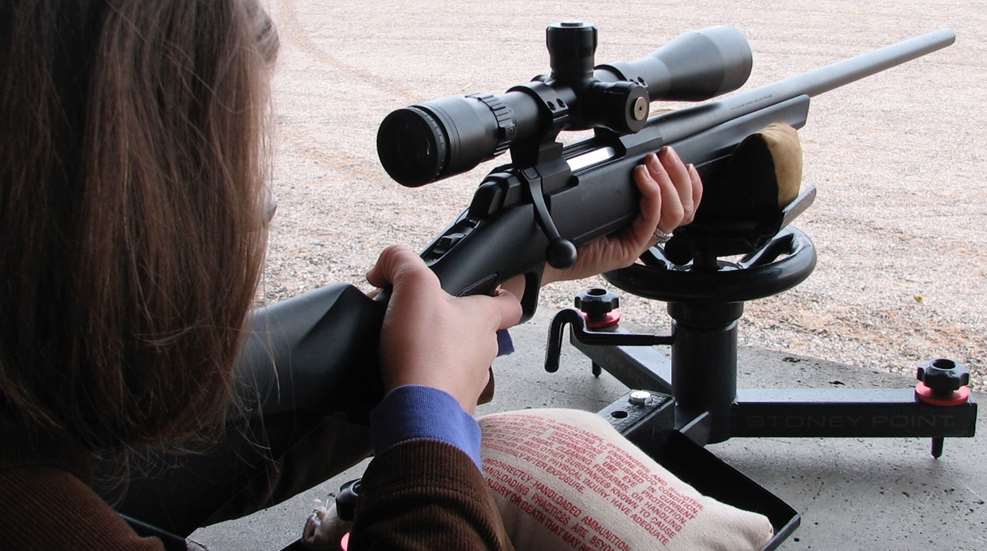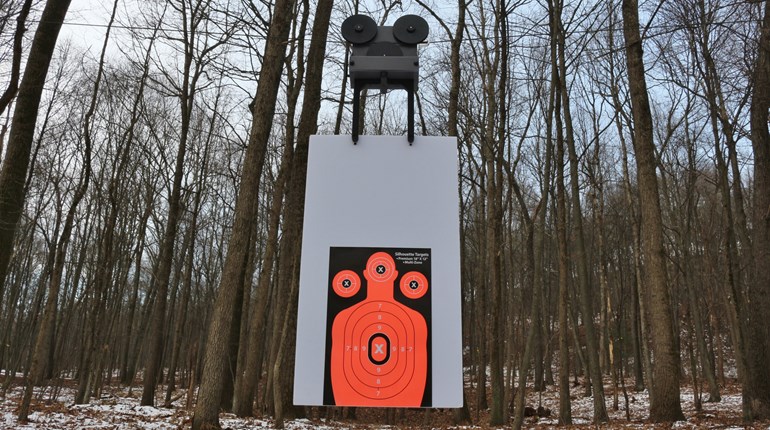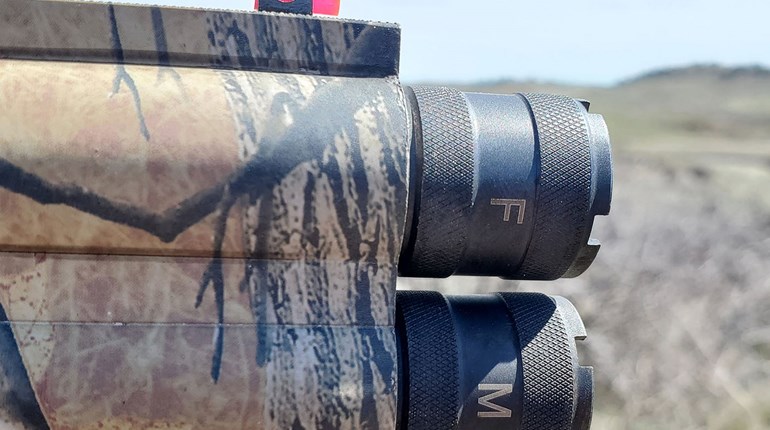
This is embarrassing. A couple of months ago, I flew across the country for a turkey hunt with some fellow media members—all men, most of whom I did not know prior to my arrival. I’m working on my turkey grand slam, which requires four sub-species of wild turkey, and this hunt was my chance to tick off the third species on my list. I was excited. We’re talking bucket-list opportunity here.
When I sat down at the bench to sight in the gun, the first shot mildly hurt in the normal way that a turkey load hurts. At the second shot, I felt something tear in my shoulder. Suddenly I could barely use my right arm and had no strength in my hand. Fortunately, the pattern was good and I was satisfied that the gun was sighted in to my liking, so I didn’t have to shoot again. I managed to make the gun safe and get up and put it back in a case, although it was a struggle doing so behind everyone’s backs so no one noticed I was hurt. Do you know how embarrassing it is to be the one who hurts her shoulder shooting when you happen to be the ONLY girl in camp? And I still have no idea what happened, as I’ve been shooting hard-hitting turkey guns for many years without issue.
As the evening wore on and it became clear that it wasn’t temporary pain, but a true injury, I eventually had to let my fellow hunters know what was going on. I couldn’t lift my arm higher than my ribs and couldn’t extend my forearm away from my body in any direction, so hunting the next morning was out, but I was hoping I’d feel good enough to hunt in the afternoon. I woke up early and saw the other hunters off, cursing my luck. And unfortunately, I wasn’t feeling any better and didn’t have any more range of motion in my right arm.
I only had a few days to kill a turkey, and who knew when I’d have this opportunity again? I wasn’t about to waste it, but there was absolutely no way I could pick up, much less maneuver and shoot, a shotgun with my right arm. The only thing to do, I decided, was to figure out a way to shoot left-handed.
I spent the morning on the range, fiddling with shooting sticks and an unloaded gun, working out a way that I could hoist the gun onto the sticks (because I couldn’t support it with my right arm) and playing around with what it felt like to snug the gun into my left shoulder. Weird, is what it felt like. Really weird. But I could get a good sight picture and I felt confident I could pull off the shot left-handed. And the next morning, laying prone using the lip of an irrigation ditch for cover and a front rest, I shot my turkey.
It all worked out, and about six weeks later my shoulder was finally back to normal. But in hindsight, I was a fool for never having considered off-side shooting before. We all know things can go sideways on a hunt—even if it’s not an injury, sometimes the way you’re set up or the direction the animal comes in from dictates a shot from your non-dominant side. Don’t be a dummy like I was and wait until you’re forced into this situation to try an off-side shot. Here are a few tips to help shorten your learning curve.
Switch everything, not just the shoulder you shoot off of. That is, pull the trigger with your opposite hand and find your sight picture with your opposite eye.
Practice often enough to develop some muscle memory. Even as I was lying in that field watching a turkey feed toward me, my right hand kept wanting to reach over and wrap around the pistol grip, ready to pull the trigger. Of course it felt awkward, but the whole thing felt awkward to begin with, so my brain didn’t flag it as unusual, and the pain stopped my hand from getting all the way there anyway. It would likely have been a mess, and I was better off pulling the trigger with my left hand, which is what I eventually did. Practice shooting on your off-side frequently enough that it doesn’t feel super weird anymore and you won’t have to worry about confusion in the field.

Figure out your sight picture. If you are swinging a shotgun on a flying target, you need to look down the barrel (but not at the barrel; focus on the target) with the eye that’s on the same side as the shoulder the gun is mounted to. So if you are a right-handed, right-eye-dominant shooter like me, you’d practice mounting the gun to the left shoulder and finding the target with your left eye. This will be easier if you close your dominant (right) eye, because it will always try to take over if given the opportunity. If you are cross dominant and your off-side eye is your dominant eye, you’re in luck, because you can use it just fine, although you might still be fighting your training depending on how you normally shoot. You will probably miss a lot of flying targets at first while your eyes (and hands) make the adjustment, but it will get easier.
This is true for rifle shooting through a scope, as well—use the eye that aligns with your shoulder and close your other eye if it is dominant. Be extra careful to line up well behind the scope. Red-dot sights make this a little easier, and I used one on my turkey gun. If you’re behind a red dot and you can see the dot on target, your aim will be true. This is not necessarily the case for the crosshairs of a scope, at least not to the same extent.
Handguns are a little different, because you can use your dominant eye while shooting with your non-dominant hand; you just have to align the gun a little differently than you normally do.
Work on gun manipulation. I had far too little time to practice loading and unloading the gun, getting it into position, and operating my red-dot optic with my left hand, and the whole process was clumsy and awkward as a result. Fortunately, we set up with the turkeys far enough away that I had time to work it out in the field, and I only needed one shot, so I could take my time unloading afterward. That won’t always be the case on every hunt, however, so practice manipulating the gun safely with your non-dominant hand. You never know when you’ll need it.















































